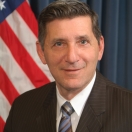
A few weeks ago, I joined in a Facebook chat with The Addict's Mom, an online community of mothers with children and family members suffering from substance use disorders. It was a privilege for me to listen to their experiences and help provide answers on the heroin and prescription opioid epidemic in this country.
I couldn't respond to all of the questions asked in the chat, but as promised, my team and I put together answers for some of the most-asked questions. Take a look, and share if you know any friends or family who might have similar questions.

On treatment instead of prison
Q: "Rehab, not jail. Addiction needs to be treated as a medical condition, not a crime."
A: I couldn't agree more. From the beginning of this administration, President Obama has said that we cannot arrest and incarcerate our way out of our drug problems. Incarcerating people because of their substance use disorder is inhumane and ineffective. Substance use disorder is a brain disease, and as such needs to be addressed like other health conditions, focusing on prevention and treatment. That's why we've been supporting the ongoing expansion of alternatives to incarceration. A good example of this is drug courts, where law enforcement and public health communities work together to divert individuals from incarceration and into community-based treatment programs. You can learn more about these alternatives here.
On medication to help with recovery
Q: "My son is in recovery now, but is on Suboxone and plans to go on Vivitrol. I know this is not recognized in AA and NA as being clean, but if it keeps my son alive, I'm supporting him. It's been 7 or 8 years of him trying to beat this dreadful disease. I pray this helps him. What are your thoughts on Vivitrol?"
A: We know that chances for long-term recovery from an opioid use disorder are improved when people take a medication, combined with other treatment and recovery supports. The FDA has approved three medications that are highly effective in treating people with opioid use disorders: Methadone, Buprenorphine, and extended-release Naltrexone (Vivitrol). There are multiple paths to recovery, and we want to ensure that everyone has access to these life-saving medications. Learn more about medication-assisted treatment here.
On dual diagnosis treatment
Q: "Please help us raise awareness, end the stigma and provide dual diagnosis long term treatment for all that seek it. We need facilities with a dual purpose of addiction and mental illness that don't cost an arm and a leg."
A: We're working to end the stigma and misunderstanding that often surround substance use disorders and mental health disorders through outreach and education. We know that there's a high rate of people who are suffering from both mental health and substance use disorders and there is growing awareness of their unique and varied needs. With new chronic care and collaborative treatment approaches and expanded coverage, I'm hopeful that communities can better support the types of care and long term support services needed for individuals with dual diagnoses. You can learn more about co-occurring disorders and treatment here.
On healthcare costs for quality treatment
Q: "My son is 24, already dreading when he ages out of our insurance. When they are using, holding a job with benefits isn't the norm, and getting good treatment while they are floundering is impossible."
A: Unfortunately, there are many people with substance use disorders who are still without insurance. The federal government does support state treatment and recovery support programs for those who need care but still don't have insurance. You can learn about these programs in your area:
Find treatment services in your state here.
Find your Single State Authority here.
But I believe we also need more funding for treatment. That's why the President's budget calls for $1.1 billion in new funding to expand access to treatment for prescription drug abuse and heroin use. This investment, combined with other efforts underway to reduce barriers to treatment for substance use disorders, will help ensure that every American who wants treatment can access it and get the help they need.
On long-term inpatient care
Q: "We need insurance/Medicaid coverage for long term inpatient care. It is so disheartening to be told over and over that programs do not accept your insurance. The window of opportunity of willingness to seek treatment by our addicted children closes very quickly. By the time we research and contact and find programs that will accept our children, they have returned to their disease."
A: Substance use disorder is a chronic disease and people who have it may need long-term services and support. Thankfully, under the Affordable Care Act substance use disorder services are essential health benefits and are required to be covered by health plans in the Health Insurance Marketplace. The law also requires covered substance use disorder benefits to be comparable to medical and surgical benefits. This is to make sure insurance companies cover substance use disorder treatment like they would other diseases. As with other diseases, it is vitally important that people are able access care when and for how long they need it. For more information on treatment resources, check out this page at HHS.gov.
On over-prescribing of pain medication by doctors
Q: "There needs to be more strict prescription-writing laws. Simply pulling an OARRS Report as done here in Ohio, is not enough. These pills are too easy to get and are getting in the wrong hands. It doesn't start with heroin; the pills just become too expensive."
A: I agree that more must be done to address over-prescription. In four years of medical school, students receive on average only 11 hours of pain medication training. And virtually none of that is on treatment of substance use disorders.
Here are the steps we're taking to fix this:
- This week, the Centers for Disease Control and Prevention (CDC) issued new recommendations for prescribing opioid medications for chronic pain (excluding cancer, palliative, and end-of-life care). This new guideline is for primary care providers—who account for prescribing nearly half of all opioid prescriptions. The new guideline aims to improve the safety of prescribing and curtail the harms associated with opioid use, including opioid use disorder and overdose. The guideline also focuses on increasing the use of other effective treatments available for chronic pain, such as non-opioid medications or non-pharmacologic therapies. You can find the guideline here along with other resources for providers and patients: http://www.cdc.gov/drugoverdose/prescribing/resources.html
- In October 2015, President Obama issued a memorandum directing Federal Departments and Agencies to provide training on the prescribing of opioid medications to all federal health care professionals who prescribe controlled substances as part of their federal responsibilities. He also announced a commitment by more than 40 provider groups that more than 540,000 health care providers will complete training on appropriate opioid prescribing in the next two years.
- Federal agencies have also worked with state leadership to establish and improve prescription drug monitoring programs (PDMPs), which track the prescribing of opioids and other medications, and to encourage physicians to use them routinely before prescribing opioid medications. Importantly, prescriber guidelines are being updated to assist health professionals in making informed prescribing decisions.
For more information: http://www.hhs.gov/opioids/health-professionals-resources/index.html
On waiting times in treatment centers for people who are seeking help to be immediately treated
Q: "The window of opportunity is so very short when they decide to ask for treatment. We need to be able to get them into treatment as soon as they request it, but often there are long waits for beds and they use to avoid the pain of withdrawals. We need faster beds for them."
A: On demand services are not as available as they need to be. But the good news is that the Affordable Care Act is greatly expanding treatment and is also making treatment available in new settings, such as primary care. In addition, the Department of Health and Human Services awarded $100 million in new funding for approximately 300 Community Health Centers to expand outpatient services for individuals with substance use disorders, including medication-assisted treatment. New Medicaid demonstration projects also allow states to reimburse for certain types of residential substance use disorder treatment services. More funding for treatment is needed, which is why the President has called for $1.1 billion in new funding in his budget to help ensure that all Americans who want treatment can get the help they need. Here's some more information about the federal response to the opioid epidemic.
On post-treatment support
Q: "I think the biggest challenge is access to affordable care within the community and assistance when they get out of rehab. Not having the appropriate services lined up to support recovery set them up for failure."
A: The Administration has made supporting recovery in the community a national drug policy priority. The risk of reoccurrence is particularly elevated when individuals transition from a controlled environment--whether that be a residential treatment program or incarceration--to the community. When the individual is in the early stages of recovery from an opioid use disorder this translates to an elevated risk of overdose death. This risk can be reduced through the provision of continuing care and recovery support services; initiating medication-assisted treatment prior to release for incarcerated persons with opioid use disorders; and by assuring the availability of naloxone, an opioid overdose reversal medication.
The Affordable Care Act is expanding access to substance use disorder treatment and recovery support services nationally. In addition, the Administration is expanding and enhancing community-based recovery support services through programs such as the Recovery Community Services Program and the Targeted Capacity Expansion Peer-to-Peer Support grants and through the continuation of the Access to Recovery Program. You can learn more about these services here.


